The African continent has come quite a long way with regard to espousing democracy, yet it still has to overcome numerous hurdles as it endeavors to rewrite its history.
Among the many setbacks the continent has suffered over the years is the host of so called African dictators club who continue to hold their citizenry ransom while ruthlessly clamping down on any opposing voices.
Many countries in Africa have not had free and fair elections; And Zimbabwe is the most obvious example where the Dictator has no plans on changing anything for the time as he personally enjoys every single minute of power.
In Africa there have been cases of unconstitutional seizures of power, or leaders have stayed in office despite a lack of electoral support, there has been at best some form of SADC mediation, but not the threat of military intervention.
The war in the DRC has been far larger than those in Liberia and Sierra Leone where the East African regional force intervened. And there have been a number of other cases of instability where a SADC force might well have played a role in bringing about legitimate governance, including Madagascar and Zimbabwe.
By some measures, South Africa’s President Jacob Zuma is starting to look a lot like a dictator. For example, if you size up Zuma against a list of dictatorial attributes as set out by Harvard International Relations Professor Stephen Walt, the picture looks worrying. Dictatorial features range from fear-mongering and demonising the opposition to using state buying power to reward corporate backers and punish opponents (for more on Jacob Zuma’s dictatorial tendencies, read this analysis). It’s much easier to see President Robert Mugabe for what he is, with his decades-long rule a clear example that he is in politics for himself and his cronies and will sacrifice the wellbeing of his people to keep his wife in a lifestyle of the ultra-rich.
A recent report by City Press detailed how President Jacob Zuma refused to heed calls by the ANC’s integrity commission to resign, believing only he could stop the West from capturing the ANC.
His defiance and belief that only he possesses the power to ward off threats to the organisation show narcissism and paranoia displayed by dictators, prompting the question: Is South Africa watching the making of its own tyrant?
Zuma’s administration can be likened to baking a dictatorship-flavoured cake. Over the past few years South Africans have watched Zuma tick off the ingredients of the recipes in a book that could be called How to Make an African Dictator.
The ingredients he has collected so far include: a collapse of disciplinary systems, fearmongering and paranoia, an exaggerated mandate, no distinction between personal and private property, and demonising the opposition.
but in the meantime South Africa President Jacob Zuma took time to explain the meaning of democracy to African dictators which included Edgar Lungu and Robert Mugabe at the Economic Forum in Durban, South Africa.
President Zuma failed short of condemning Lungu and Mugabe for their brutality and violence against their citizens. He reiterated that protests are part of tenets of democracy. Using Police brutality and criminal activities to suppress the voice of the dissenting citizens is an affront to democracy.
“You can no longer see or identify yourself solely as a member of a tribe, but as a citizen of a nation of one people working toward a common purpose.”
― Idowu Koyenikan,
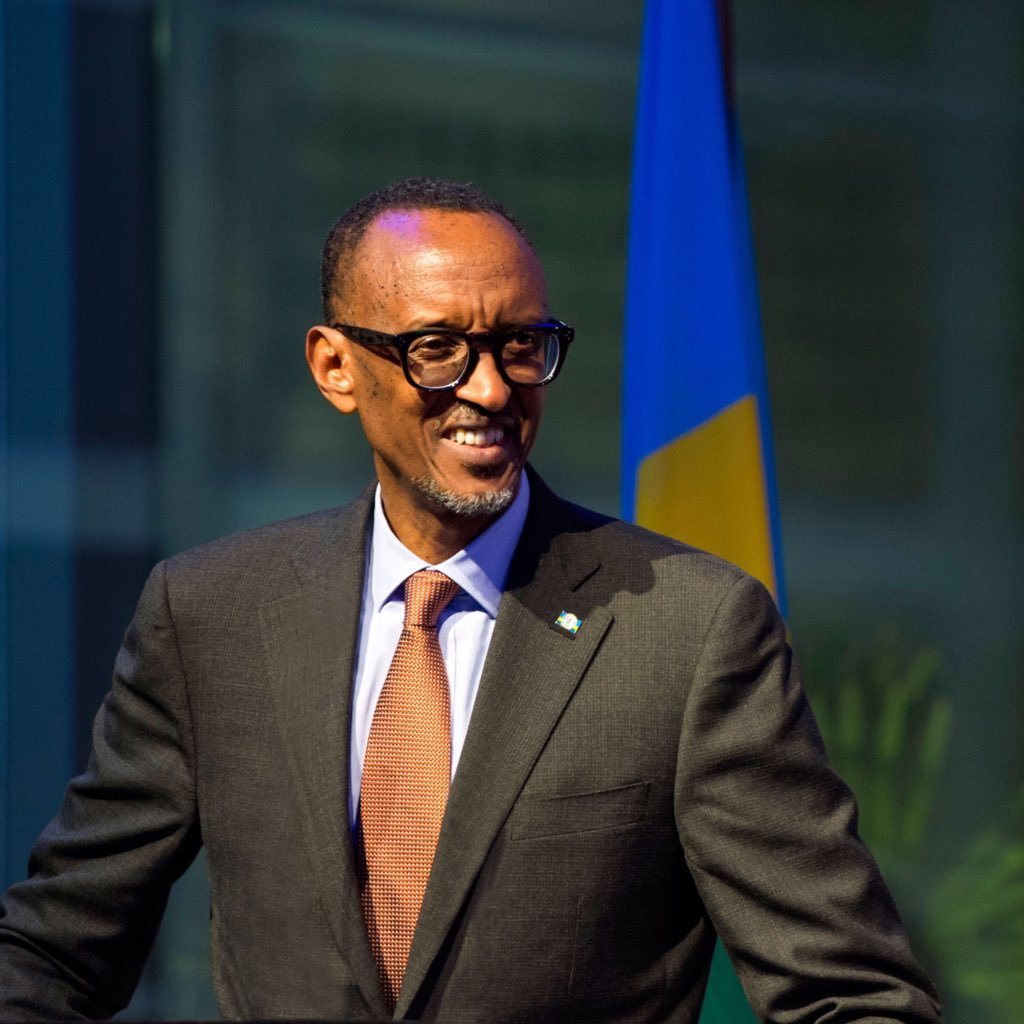
20. PAUL KAGAME (RWANDA: 1994-PRESENT)
Paul Kagame became the President of Rwanda in the year 2000. He rose to power through his guerrilla movement that ended the 1994 Rwandan Genocide.
Years in power: 21 years +
Highs: Kagame has led Rwanda towards the path of economic prosperity, his government has been described by the UN and several international leaders as the model of good governance in Africa.
Lows: Kagame’s regime been marked by accusations of human right abuse, oppression of political opponents and the press.

19. ZINE EL ABIDINE BEN ALI (TUNISIA: 1987–2011)
Zine El Abidine Ben Ali was the President of Tunisia from 1987 to 2011. Ben Ali, he assumed the Presidency in a bloodless coup, a month after he was appointed the prime minister. He led Tunisia for 23 years before stepping down in January 2011 due to a massive protests demanding his exit.
Years in power: 24 years
Highs: Tunisia witnessed stability and economic prosperity under Ben Ali
Lows: In 2012, in abstention, he was sentenced to a life imprisonment for his role in the murders of protesters in the 2011 revolution that led to his exit from power. Embezzlement, misuse of public funds, suppressing political opponents are some of the sins of one of Africa’s longest-serving dictators.

18. GNASSINGBÉ EYADÉMA (TOGO: 1967–2005)
Gnassingbé Eyadema remains one of Africa’s longest-serving dictator. Eyadema became the president of Togo in 1967 after he led a military coup against the incumbent President, a man he helped bring to power in a bloody military coup. He died of a heart attack in 2005, and his son Faure was named the President of Togo in controversial circumstances.
Years in power: 38 years
Lows: Eyadema is the pioneer of Africa’s first military coup d’etat, an act that soon became the political trend in Africa. He organized a presidential election in 1998 and canceled “in the interests of national security” when he was losing. He was accused of several cases of human right abuses.

17. HASTINGS KAMUZU BANDA (MALAWI: 1963–1994)
Banda, one of Africa’s greatest dictator, he led Malawi from 1961 till 1994. Banda lost effective control of Malawi during his absence from Malawi in 1993 when he was flown to South Africa for an emergency brain surgery. Bakili Muluzi, his former political protégé, became president in 1994, after the general elections Banda had earlier postponed was conducted in 1994.
Years in power: 31 years
Highs: He was fought against colonialism and led of Nyasaland (now Malawi) to independence as Malawi in 1964.
Lows: His reign left Malawi as one of the World’s poorest country. One in three children under five died of starvation, he regularly tortured and murdered political opponents. Human rights groups estimate that at least 6,000 people were killed, tortured and jailed without trial under Banda.
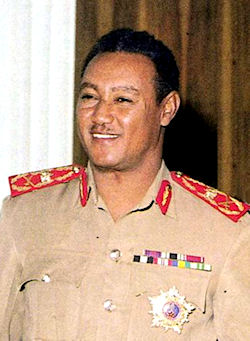
16. GAAFAR NIMEIRY (SUDAN: 1969–1985)
Gaafar Nimeiry came to power in a 1969 coup that put an end to five years of corrupt civilian rule. He was ousted from power in 1985 and went into exile in Egypt until he was allowed to return in 1999. He contested in the 2000 Sudanese elections; he got just 7% of the votes. He died in may, 2009 at the age 79.
Years in power: 16 years
Highs: He signed the Addis Ababa Agreement, which ended the First Sudanese Civil War and brought a decade of peace and stability to the region.
Lows: His indiscriminate borrowing left the Sudanese economy in ruins, the Sudanese currency lost almost 90% of its value against the major international currencies. He imposed Islamic sharia law in 1983; this led to a two-decade long war religious war between the Muslim north and the mainly Christian south.
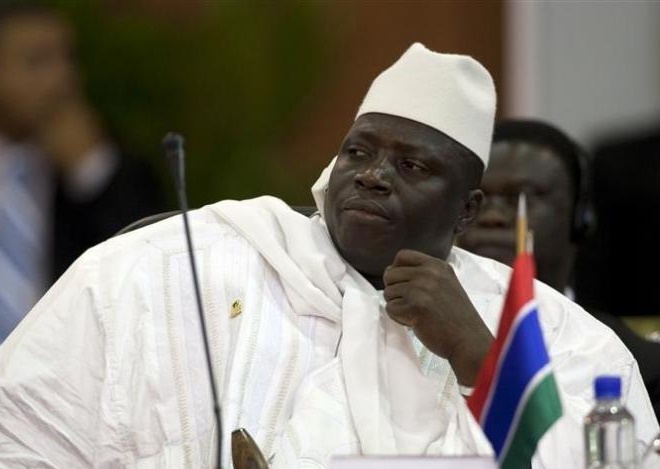
15. YAHYA JAMMEH (GAMBIA: 1994-2017)
Yahya Jammeh took power in a bloodless military coup in 1994. Jammeh got re-elected as the 2016 general elections to Adama Barrow, and surprisingly, he conceded defeat. Only to reject the results few weeks after, he finally left Gambia on exile to Equatorial Guinea after sustained pressure by the African Union, Ecowas, and UN.
Years in power: 23 years
Lows: Strong human rights abuses have marked Yahya Jammeh’s regime, he also claims to have a cure for HIV Aids and his hate for homosexuality is well documented, recently, he threatened to slit the throats of any homosexual in Gambia.
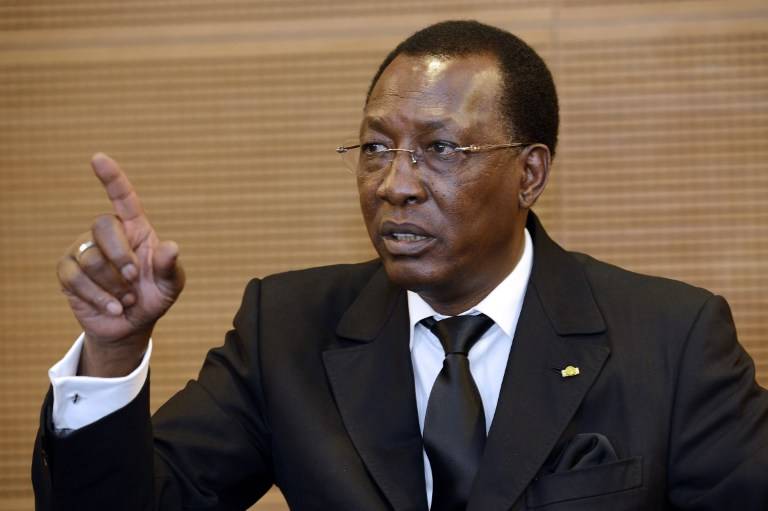
14. IDRISS DEBY (CHAD: 1990-PRESENT)
In December 1990, Idriss Deby and his Patriotic Salvation Movement, an insurgent group, backed by Libya and Sudan sacked the incumbent government, and Déby became the President of Chad.
Years in power: 25 years +
Highs: Sacked the barbaric Chadian dictator Hissene Habre from power.
Lows: Deby has used oil proceeds and funds that could have been used to develop Chad to purchase weapons and strengthen his Army. Forbes named Chad the world’s most corrupt nations in 2006. It described Deby’s decision to buy weapons with the funds supposedly intended to counter famine as “what may turn out to be the single most piggish use of philanthropic funds.”
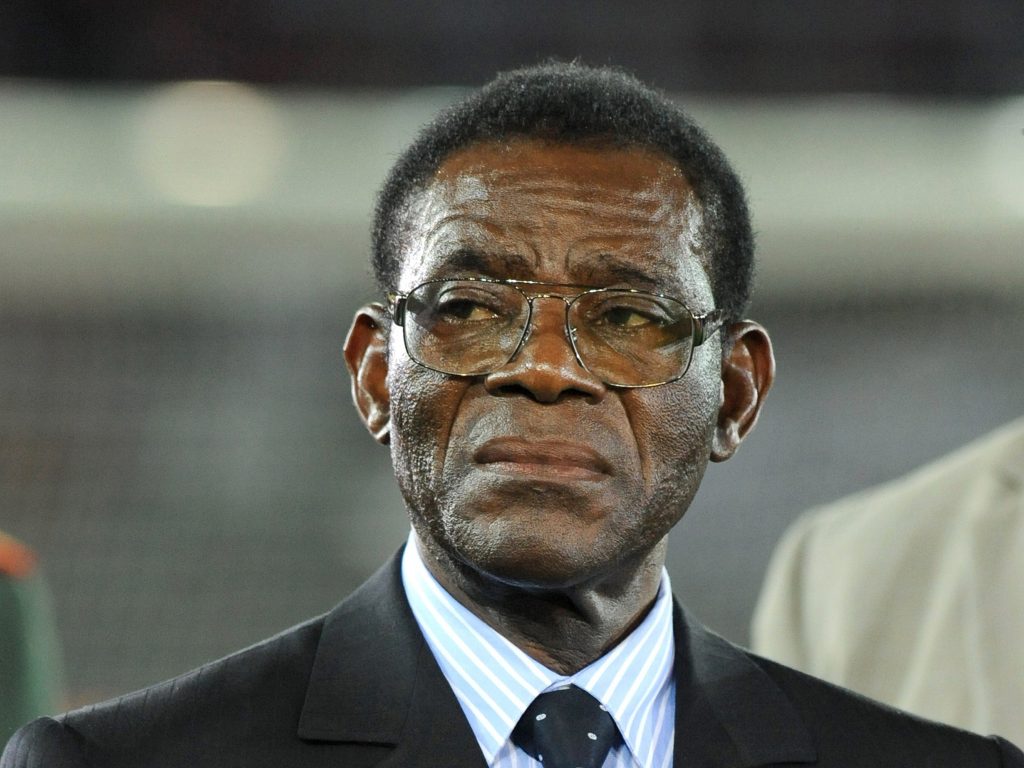
13. OBIANG MBASOGO (EQUATORIAL GUINEA: 1979-PRESENT)
oldest african dictators
Teodoro Obiang Nguema Mbasogo has been President of Equatorial Guinea since 1979 when he ousted his uncle, Francisco Macías Nguema, in a bloody military coup and sentenced him to death by firing squad. President Obiang is one of the oldest and longest serving dictators in Africa.
Years in power: 36 years
Highs: Equatorial Guinea’s has emerged as a significant oil producer under Obiang. He also served as the Chairperson of the African Union from 31 January 2011 to 29 January 2012.
Lows: State-operated radio declared President Obiang “the country’s god” with “all power over men and things,” and thereby he “can decide to kill without anyone calling him to account and without going to hell.” Unlawful killings, government-sanctioned kidnappings; torture of prisoners by security forces, and even accusations of cannibalism has trailed President Obiang’s regime. Forbes estimates his wealth to be around $600 million; he has used an oil boom to enrich his family at the expense of the citizens of Equatorial Guinea.

12. JOSE EDUARDO DOS SANTOS (ANGOLA: 1979-PRESENT)
Jose Eduardo Dos Santos, the father of Africa’s richest woman Isabel Dos Santos, is Africa’s second longest-serving head of state, behind Equatorial Guinea’s Teodoro Obiang Nguema Mbasogo. He has been in power since 1979, and in 2017, he announced that he would finally step down and end his dictatorship over Angola.
Years in power: 36 years +
Highs: The Angolan economy has grown to become the third-largest economy in sub-Saharan Africa, after South Africa and Nigeria.
Lows: Strong allegations of corruption, misuse, and diversion of public funds for personal gain, human rights abuses, and political oppression. 70% of the population of Angola, lives on less than $2 a day and yet the Dos Santos family have amassed a massive sum of personal wealth with Angola’s oil proceeds.
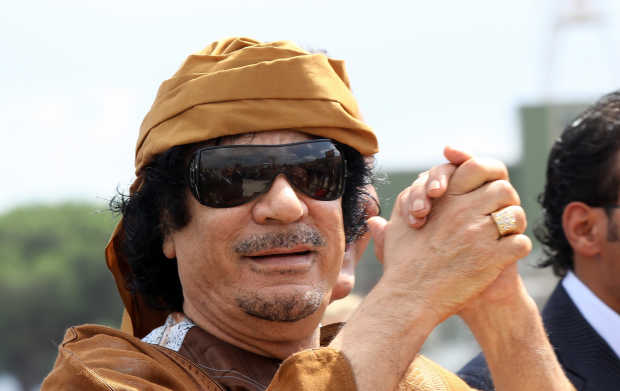
11. COLONEL MUAMMAR GADDAFI (LIBYA: 1969-2011)
worst dictators in africa
Gaddafi seized power in a bloodless military coup in 1969. The charismatic leader of Libya and one of the greatest dictators in African history met his end during the Libyan revolution in 2011 after rebels in Sirte, his city of birth, killed him.
Years in power: 42 years
Highs: Under Gaddafi, Libya became the first developing country to own a majority share of the revenues from its oil production. Gaddafi provided access to free health care, safe houses, food and clean drinking water, free education to university level which led to the dramatic rise in literacy rates
Lows: He led oil-rich Libya as an absolute dictator, for close to 42 years, he quashed anyone that opposed him, and was responsible for the death of thousands of his people.
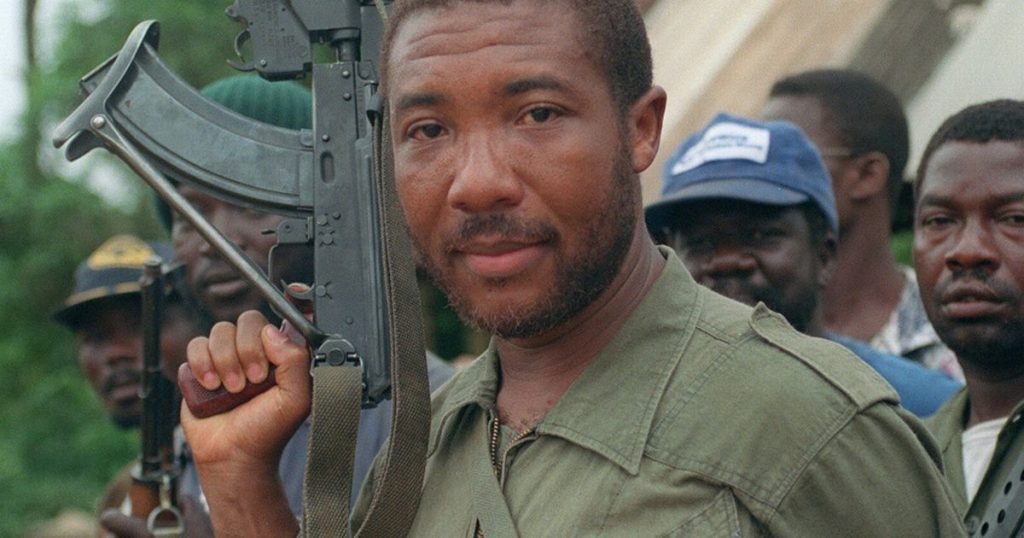
10. CHARLES TAYLOR (LIBERIA: 1997-2003)
brutal african dictator
Charles Taylor once described as the “tyrant of death” was the President of Liberia from August 1997 until 2003 when international pressure forced him to resign and go into exile in Nigeria. He remains one of the most brutal dictators in Africa till date.
Years in power: 6 years
Lows: Charles Taylor is currently serving a 50-year sentence for his involvement in what the judge described as “some of the most heinous and brutal crimes recorded in human history.” He was found guilty of the following charges: Acts of terrorism, Unlawful killings, Murder, Violence to life, health and physical or mental well-being of persons,
The first of many is Charles Taylor. Charles’s full name is Charles McArthur Ghankay Taylor and he was the 22nd president of Liberia. Charles ruled for eight years from 1997-2003. Taylor was born on January 28 1948 in a small town near Monrovia Liberia. Before he became the president of Liberia, Charles was a leader of a rebel group known as The National Patriotic Front of Liberia. Charles Taylor was accused of being a war-time criminal who committed several atrocities and crimes against humanity, this is due to his involvement in the Sierra Leone Civil War that occurred between 1991 and 2002, Charles Taylor was eventually found guilty at the International criminal court of justice, The Hague in 2012 for all eleven charges ranging from terror, Conscripting or enlisting children under the age of 15 years into armed forces or groups, or using them to participate actively in hostilities, Violence to life, health and physical or mental well-being of persons, in particular cruel treatment and in May of that year, he was sentenced to 50 years in prison. He is regarded as one of the worst dictators of Africa of the 21st century
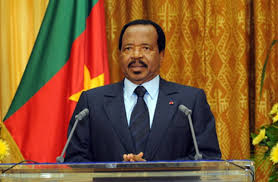
9. PAUL BIYA (CAMEROON: 1982-PRESENT)
Paul Biya has been the President of Cameroon since 6 November 1982. He consolidated power in a 1983–1984 power struggle with his predecessor and he remains a powerhouse in Africa and the president of Cameroon till date.
Years in power: 33 years +
Highs: Cameroon has enjoyed peace and stability for the past 30 years. Paul Biya’s regime has also overseen one of the strongest diplomatic relations in Africa.
Lows: Paul Biya has kept himself in power by organizing sham elections and paying international observers to certify them free of irregularities, the top African leader, and dictator who has been accused of constant human right abuse, was ranked 19th in Parade Magazine’s Top 20 list of “The World’s Worst Dictators.”
Paul hails from Cameroon and was born in February 13 1933. Politics was always in Biya’s blood, and he has managed to be president for several terms, he has been the President of Cameroon since 6 November 1982. Biya has many critics for his lack of public appearances, but Biya wields his sweeping powers like a tyrant. He rules with his authoritarian fist that lets him essentially push any policies that he deems necessary. Though not the worst of the worst, Biya is one of the best known examples of authoritarianism. “Tyrants, the World’s 20 Worst Living Dictators”, by David Wallechinsky, ranked Biya together with three others mainly in sub-Saharan Africa: Robert Mugabe of Zimbabwe, Teodoro Obiang Nguema Mbasogo of Equatorial Guinea, and King Mswati of Swaziland. He was also ranked 19th in Parade Magazine’s Top 20 list of “The World’s Worst Dictators”.

8. ROBERT MUGABE (ZIMBABWE: 1987-PRESENT)
oldest presidents in africa
Robert Gabriel Mugabe is the current President of Zimbabwe and one of the oldest dictators in Africa. He has been in power since 1980 when he was prime minister of Zimbabwe before he consolidated his power to become president on 31st December 1987.
Years in power: 28 years +
Highs: Zimbabwe boasts of one of the most impressive education systems in Africa.
Lows: The United Nations estimates Unemployment in Zimbabwe to be as high as 80%, the economy of Zimbabwe is in ruins, and life expectancy for both male and females is a little above 50 years. Massive hyperinflation has made the local currency of Zimbabwe worthless, the exchange rate of Zimbabwe dollar is 35 quadrillion to US$1. The local currency has been retired and replaced with the US dollar and South African rand, and this has led to the near collapse of the manufacturing industry in Zimbabwe.
Uncle Roo is the quintessential hero to tyrant, the modern-day messiah that helped bring freedom to Zimbabweans only to get himself power drunk, he has been in power since 1980. Robert Gabriel Mugabe is a man who needs no introduction. Mugabe is an odd man when it comes to dictators. He has the illusion of democracy on one hand while he oppresses the white Zimbabwe people with the other, Robert Mugabe has been viewed as being racist towards white people, targeting white citizens in various ways. To make him even more confusing, a number of Africans consider Mugabe a hero in their eyes. Mugabe has committed many crimes against human rights according to news sources. In Mugabe’s words he has referred to lesbians and gays as being “worse than dogs and pigs”. Though his worst crimes are wielding his authoritarian power to strip white people of their wealth and property. In the international scene, he is regarded by many, especially the white folks as one of the worst dictators of Africa ever.
7. GENERAL SANI ABACHA (NIGERIA: 1993-1998)
Sani Abacha became the head of state of Nigeria in 1993 after he sacked the interim president appointed after the annulment of the 1993 elections. The exact details of the dictator’s death in the presidential palace in 1998 remains unclear, but it was met by wide celebration and soon after Nigeria returned to a democratic path.
Years in power: 5 years
Highs: Abacha’s regime was a massive economic success for Nigeria. Foreign exchange reserves rose from $494 million in 1993 to $9.6 billion by the middle of 1997. External debt was reduced from $36 billion in 1993 to $27 billion by 1997; inflation rate went down from the 54% he inherited to 8.5% between 1993 and 1998, and global oil price was priced at an average of $15 per barrel.’
Lows: General Sani Abacha’s regime was characterized by massive looting and human right abuses such as the public hanging of political activist Ken Saro-Wiwa and jailing several political opponents
Abacha hails from Nigeria and though he only retained power for a scant five years, he managed to commit a lifetime of crimes in this time period. He declared his government to be above the law and he essentially did whatever he wanted. Sanni Abacha has been described by political pundits as “the most brutal dictator of the west African powerhouse”. He ruled his nation with impunity. Though unconfirmed, rumours emanating from official circles has it that the senior military officer died in sexual bouts with Indian prostitutes. He will always be remembered for the 1995 killing of the political and environmental activist, Ken Saro Wiwa. He was also responsible for 5 billion dollars in stolen funds. It is believed that his family still holds a significant amount of these ill-gotten gains. General Sani Abacha is one of the worst dictators of Africa.

6. SEKOU TOURE (GUINEA: 1958-1984)
Ahmed Sékou Touré was elected as the first President of Guinea in 1958, a position he held until to his death in 1984. Toure like many other dictators in Africa, survived several assignation attempts and coups while he was in power, he died of heart failure in 1984.
Years in power: 26 years
Lows: Toure banned all opposition parties and declared his party the only legal party in the country. Toure ruled Guinea as a ruthless dictator with no tolerance for opposition. He was accused of several cases of human right abuse and extrajudicial killings.
Sekou Toure was only to be president of Guinea for four years. He managed to rule it for three decades from 1958-1984. He declared Guinea a one party state. Toure was another typical case of someone that was initially seen as the ‘Guinean Messiah’, but later became a pain to his people. Toure who was one time leader of the Pan-Africanist movement consistently spoke out against colonial powers, he befriended African-American activists that includes the like of Malcolm X and Stokely Carmichael, to whom he offered asylum. He is survived through the Guineans who fled the country to avoid the death camps that were enacted under his watch. Many of his political opponents were executed in these camps.
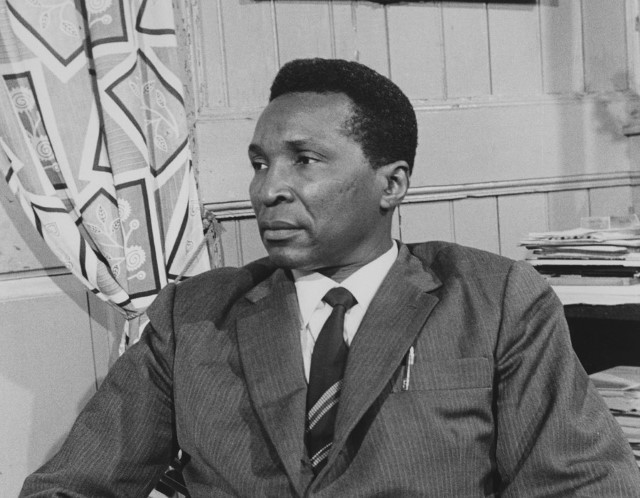
5. FRANCISCO MACÍAS NGUEMA (EQUATORIAL GUINEA: 1968-1979)
Francisco Nguema was the first President of Equatorial Guinea; he ruled Equatorial Guinea before his nephew in 1979 overthrew him and sentenced to death by Firing squad for genocide and other crimes he committed. He was brutal and apparently deranged, and he is one of the worst dictators in modern African history.
Years in power: 11 years
Lows: During his regime, he granted himself “all direct powers of Government and Institutions.” He ordered the death of entire families and villages; he executed members of his family, One-third of the population fled the country, he ordered every boat in the nation sold or destroyed and banned all citizens from the shoreline to prevent more people from escaping his terror.
Macias Nguema was the son of a witch doctor. Nguema was the first president of Guinea. Though not as brutal as some other dictators, he managed to do some of the weirdest crimes out there. Some of his crimes include stalking his mistresses’ former lovers. Other crimes he committed were intellectual murder by killing the intellectuals of his country. According to reports, more than a third of Equatorial Guinea’s population had to flee to other countries to escape his brutal reign. It was also reported that he ordered execution of entire families and villages, during the time of his reign, the country had neither a development plan nor proper accounting system for government funds. Macias Nguema trusted no one, he spent most of his time in his ancestral village of Mongomo, where he kept the national treasury right under his bed or in suitcases in his hut, but on the 18th of August in 1979, he met his end by his own nephew who sentenced him to death. His nephew Teodoro Obiang Nguema is still in power to this day.
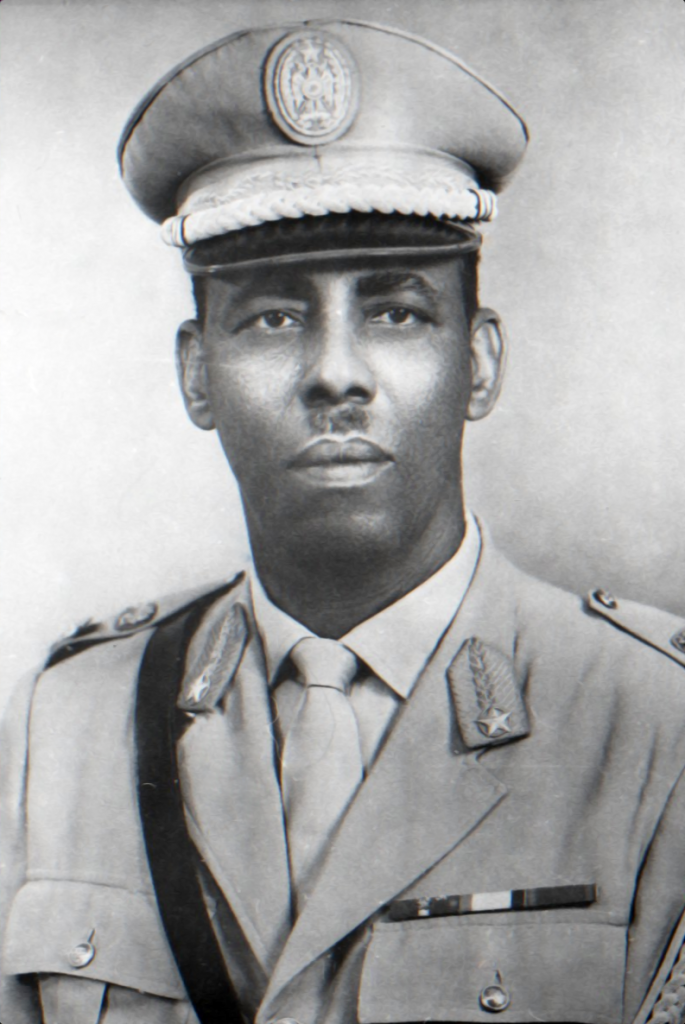
4. SIAD BARRE (SOMALIA: 1969-1991)
Siad Barre took power in a Coup d’état in 1969, and he ruled Somalia for over 20 years before he was overthrown in 1991. He passed away in January 1995, on exile in Lagos Nigeria. General Siad Barre’s exit left Somalia without a central authority, and this resulted in a civil war that left the country without a leader for over two decades.
Siad Barre Quotes: Exiled Absolute Leader of Somalia
Years in power: 22 years
Highs: Siyad Barre served as chairperson of the Organization of African Unity (African Union). During his early years, he successfully created model agricultural factories that boosted the country’s economy.
Lows: General Siad Barre’s regime, like many dictators in Africa, was marked by human right abuses, The UN Development program asserts “the regime of Siad Barre had one of the worst human rights records in Africa.”
Siad Barre was a man who seized power and stayed in power from October 21 1969 to January 26 1991. He adopted socialism to the so-called needs of Somalia. His influences came from countries such as China and Russia. Though he attempted a lot of good, Barre committed a significant amount of human rights violations such as jailing dissidents. Barre was also very well-known for using his power to remove all opposition or people who he just didn’t like. Barre died in political exile in 1995, but was returned to Somalia for burial in his home region.

3. OMAR AL-BASHIR (SUDAN: 1989-PRESENT)
wanted African leaders
Sudanese President, Omar al-Bashir has been the leader of Sudan since 1989 when he took power in a military coup. Al-Bashir is one of the most brutal dictators in Africa and despite ICC’s warrant against him; he remains the president of Sudan.
Years in power: 26 years +
Lows: The International Criminal Court wants Omar al-Bashir for genocide, war crimes, murder, rape, torture, and other crimes against humanity for his crimes in Darfur.
Omar Al-bashir is a more recent case of dictators. His biggest call to fame was in March 4 2009 when he was issued an arrest warrant. Omar has been charged with seven crimes against humanity. Omar planned to commit genocide against several ethnic groups such as the Massalit and Zaghawa groups, Omar is regarded by many today as one of the worst dictators of Africa.

2. HISSENE HABRE (CHAD: 1982-1990)
worst African leaders
Hissene Habre seized power in 1982 from Goukouni Oueddei, who had just been elected President, he lost power to his former military commander officer Idriss Deby in December 1990. Habre fled to Senegal when Deby’s Libya backed insurgents marched into the capital, N’Djaména. In May 2016, he was convicted of crimes against humanity.
Years in power: 8 years
Lows: Hissene Habre’s government carried out a frightening 40,000 politically motivated murders, and there are documented cases of at least 200,000 tortures in Habre’s brutal eight-year rule of Niger.
Hissene Habre is one of dictators that didn’t do too much, but still is a bad dictator. His rise to power was from Libya invading Chad. Habre and his troops defeated Libyan troops and sent them packing in November 1981. However, many human rights groups hold Habre responsible for killing thousands of people. These killings include massacres against Hadjerai, and Zaghawa. The Human Rights watch charged him with authorizing the murders of tends of thousands of humans and torturing them while under his rule.

1. IDI AMIN DADA (UGANDA: 1971-1979)
worst dictator in africa
Idi Amin seized power in the military coup of January 1971, sacking Milton Obote. Idi Amin fled Uganda in the heat of the Uganda-Tanzania war and went into exile in Libya and then Saudi Arabia where he lived until his death on 16 August 2003.
Years in power: 8 years
Lows: Amin’s rule was characterized by rumors of cannibalism, frightening human rights abuses, political repression, several extrajudicial killings, corruption, and gross economic mismanagement. International observers and human rights groups estimate the death toll of his regime to be around 500,000.
Ever seen that 1981 movie titled “Rise and Fall of Idi Amin” or 1976 “Raid on Entebee”? – Kind of brings back some old memories, what about “The Last King of Scotland” (2006) that earned Forest Whitaker Academy awards best actor, these movies are based on the events of the brutal Ugandan dictator Idi Amin. Idi Amin is someone that doesn’t need too much introduction, he is one of the worst dictators of the last 20th century, also known as the “Butcher of Uganda”. This 6 feet 4 inches tall Ugandan boxing champion made the highest rank possible for a Black African serving in the British Army. This man committed some unbelievable brutality that only modern-day Mexican drug cartels would touch, It is believed that at least 300,000 people were killed during his regime. He was born some time in the mid 1920’s in Koboko Uganda and died in August 18 2003. This butcher left his mark on the world by using his infamous killer squads to murder his opponents and their families. He showed no mercy to anyone. The scariest thing about Amin was his ability to change from a gentleman to an incredibly angry person with no provocation. Amin is some that has been described as erratic, unpredictable and outspoken. After the United Kingdom broke off all diplomatic relations with his regime in 1977, Amin declared he had defeated the British and conferred on himself this full title:
“His Excellency, President for Life, Field Marshal Al Hadji Doctor Idi Amin Dada, VC, DSO, MC, Lord of All the Beasts of the Earth and Fishes of the Seas and Conqueror of the British Empire in Africa in General and Uganda in Particular”
Born in 1928 in Koboko, a Uganda Protectorate, the late-Idi Amin Dada was a Ugandan politician who ruled between 1971 and 1979. He joined the British Colonial Army in 1946 and took part in British actions against Shifta Warriors in Somalia and Mau Mau rebels in Kenya.
Nine years after Uganda’s independence in 1962, Amin led a bloody coup against Uganda’s first President, Milton Obote, and declared himself president.
Amin’s eight-year regime was characterized by serious human rights abuses, including extrajudicial killings, torture, ethnic persecution, political repression, and corruption.
It is estimated that close to 500,000 people were killed by Amin’s regime.
Bodies were often dumped in to River Nile to be washed away, and most of these victims were supporters of exiled President Obote and members of the Acholi and Lango ethnic groups.
Amin was deposed by Obote forces with the help of Tanzanian forces in 1978, after he attempted to annex the Kagera Region in Tanzania.
He fled to Libya in 1979 and later relocated to Saudi Arabia, where he settled until his death in July 2003.
Idi Amin was a polygamist with at least five wives and 43 children.
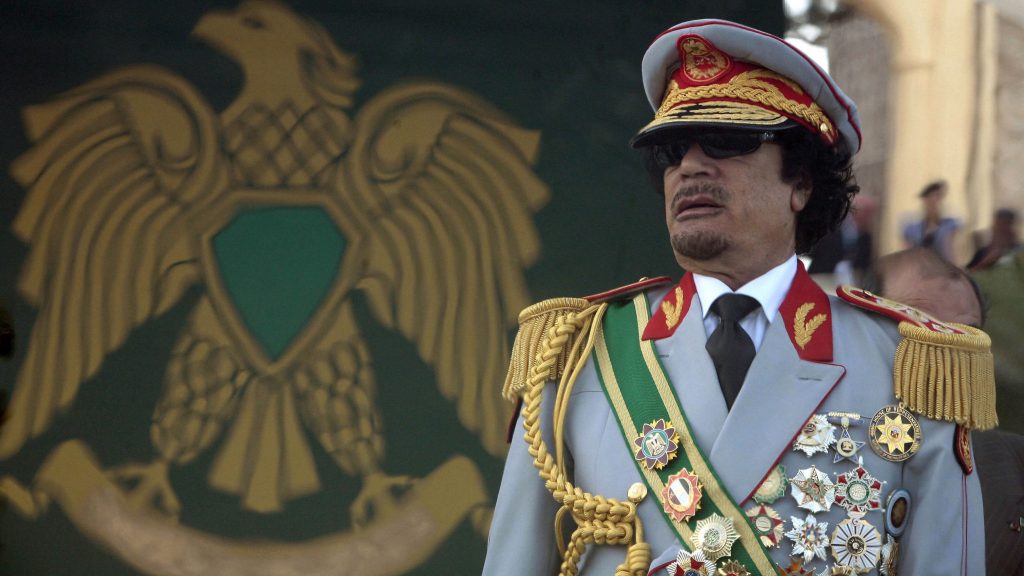



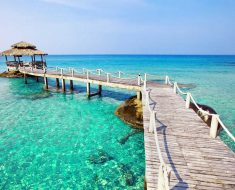
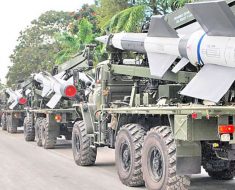
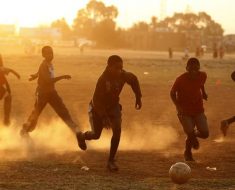


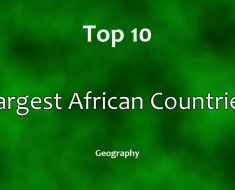



Museveni have to be on this list 33 years of oppressing we Ugandans
You should look foward to impeach him sir
you really couldn’t find a picture of amin?????
Eritrian Isayas Aforki to be on this list 29 years
No Saddam or Al-Assad??
ITS ELITE TO MAKE MORE RESEARCH AND PUBLISH AN ACCURATE LIST WE HAVE WORSE TYRANTS LIKE YK MUSEVENI MISSING